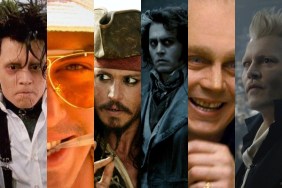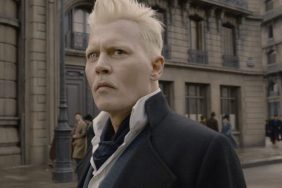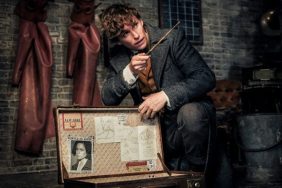David Heyman produced the Harry Potter movies, so he has at least some idea what will connect with an audience. I expect this will be proven again this weekend when his latest film, Gravity, arrives in theaters. The film stars Sandra Bullock and George Clooney as astronauts stranded in space, devoid of hope, but trying to survive despite genuinely impossible odds. I gave the film a 10/10, a rating I have never given a new feature motion picture before, so I was particularly keen to talk to David Heyman about the Gravity‘s development.
But as a Harry Potter fan, I also snuck in a few questions about the future of the franchise, and Fantastic Beasts and Where to Find Them. Plus: background information on Heyman’s (surprisingly limited) involvement in the hit summer comedy We’re the Millers, and the 2007 blockbuster I Am Legend.
CraveOnline: This movie is incredible.
David Heyman: Thank you.
Thank you.
As a producer you’re only as good as the director and the material and the talent you’re working with, and I have the privilege of working, twice now… with a lot of good directors… but a truly extraordinary talent in Alfonso [Cuarón].
How long ago did Gravity come up between you two?
[Thinks] Three and a half, four years ago?
How was it first brought up?
He said, “Hey David, do you want to produce a film for me?” I was still finishing Harry Potter, but I jumped after reading the script. I made make this “Guide to the Four Seasons” if Alfonso wanted to. He’s one of those filmmakers. When I read the script I loved it, because it was a thrill ride. It was really visceral. You knew it was going to be a really visceral, immediate experience. The action was very specific. But within that was a very human story, and that’s what he does. He tells very human stories, and they work on many planes. There’s the narrative plane, there’s the character plane, then there’s the thematic. To me, this operates on all three. It’s a great thrill ride, you see Ryan Stone going through her journey, and then there’s the themes of adversity and birth and rebirth, often told in visual language, which is so beautiful.
It is a very tightly constructed script. Did it go through a lot of development over time?
Where the development really came in was with the characters. When Sandy [Bullock] and George [Clooney] came aboard they helped define the characters more clearly. The characters were there, but when you get to work with an actor who’s as smart as Sandy or George, they bring an awful lot, and Alfonso’s a collaborative director. He has a very clear vision, it’s his vision, but he’s very open to collaboration.
One imagines when you cast George Clooney the character becomes more charismatic or attractive.
Just by the very nature of being there. Actually, earlier, earlier, much earlier on, [Robert] Downey [Jr.] was attached to that part, and it didn’t work out because of his schedule, and frankly I think it was for the best for many reasons. One, because Downey’s best when he can move around and improvise, and this was a very structured, rigorous shoot. Alfonso would literally, because every shot connected with what came before and comes afterwards… You’d have to begin here, and end there, and here on second 0:08, and here on second 0:12. It was that precise.
That’s not much room to be extemporaneous.
His schedule didn’t work out. So we went with Sandy and George, and he couldn’t have been better.
Was Sandra Bullock your first choice?
The project began with Angelina [Jolie] in its initial incarnation.
Do you think that would have turned Gravity into a different film?
I think it would have been a very different film. What I love about Sandy, and there’s so much, but so much of that performance is based on this… [Gestures around his face] You don’t have the physicality. You can’t express it by [slouches] or [fist pumps] “Yes!” You can’t! She’s in that visor.
She’s got a very sympathetic look, whereas Angelina Jolie is a bit more…
I love Angelina, and I think she’s great, but it’s very, very different. There’s something about… Sandra really embraces this androgynous quality. She’s a character, it’s very important for her, who’s cut off emotionally, who is disconnected, who lost her femininity. That’s where we find her at the film’s beginning.
We had astronauts introduce the film, assuring us that it is technically accurate, or as accurate as a film could more-or-less be. Was there anything that changed over the course of the film as you brought in people to consult?
Some of the physics. Alfonso was very keen on getting the physics right. We had an astronaut consult and that was quite helpful on a couple of points, in terms of movement and positioning and equipment. But it was largely… Sandy’s had a conversation with an astronaut who was on the I.S.S. […] She’s great. Actually, she was really sweet. We took the crew photo and then we sent it up to her. Technology is amazing. We sent it up to her in the I.S.S. and she put the photo of the crew against the window so the whole crew was in space. Of course everybody thought we did it digitally! [Laughs] But it was actually the real thing!







